|

|
Since its founding in 1917, the American Association of Petroleum Geologists (AAPG) has been a pillar of the worldwide scientific community. The original purpose of AAPG, to foster scientific research, to advance the science of geology, to promote technology, and to inspire high professional conduct, still guides the Association today.
AAPG provides publications, conferences, and educational opportunities to geoscientists and disseminates the most current geological information available to the general public. As the world's premier professional association for explorationists, AAPG is about the science of petroleum geology.
|
|

|
The American Geosciences Institute (AGI) is a non-profit federation of geoscientific and professional associations that represents more than 250,000 geologists, geophysicists, and other earth scientists.
Founded in 1948, AGI provides information services to geoscientists, serves as a voice of shared interests in our profession, plays a major role in strengthening geoscience education, and strives to increase public awareness of the vital role the geosciences play in society's use of resources, resilience to natural hazards, and the health of the environment.
|
 |
The American Institute of Professional Geologists (AIPG), founded in 1963, is the largest association dedicated to promoting geology as a profession. It presently has more than 7,000 members in the U.S. and abroad, organized into 36 regional Sections.
The Institute adheres to the principles of professional responsibility and public service and is the only international organization that certifies the competence and ethical conduct of geological scientists in all branches of the science with members employed in industry, government, and academia. AIPG emphasizes competence, integrity and ethics. AIPG is an advocate for the profession and communicates regularly to federal and state legislators and agencies on matters pertaining to the geosciences.
|
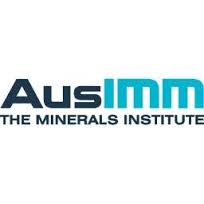 |
The Australasian Institute of Mining and Metallurgy (The AusIMM) was founded in 1893 and provides services to professionals engaged in all facets of the global minerals sector. One of its main purposes is focusing on providing leadership and opportunities to minerals industry professionals.
The AusIMM delivers an ongoing program of professional development services to ensure its members are supported throughout their careers, enabling them to provide high-quality professional input to industry and the community.
The AusIMM represents more than 13,500 members drawn from all sections of the industry and supported by a network of branches and societies in Australasia and internationally.
|
 |
Since its formation in 1858, the Geologists’ Association (GA) actively promotes the study of geology to all who are interested in the past, present and future of the natural world. It is a friendly and inclusive organisation and welcomes everyone, regardless of the level of their knowledge.
The Association is governed by a Council of up to 24 members and administered by the Executive Secretary and an Administrative Assistant. The GA has a diverse membership, drawn from across the UK and overseas, a wide network of Affiliated and Local groups and a nationwide club for young geologists and their families – Rockwatch.
The GA publishes a quarterly journal (the GA Magazine), the Proceedings of the Geologists’ Association and an on-going series of geological field guides. Financial support is available from a variety of benefactor's Funds (e.g. the Curry Fund) to support research, geoconservation and deserving students and to enhance the public understanding and enjoyment of geology.
|
 |
The mission of the Geological Association of Canada (GAC) is to facilitate the scientific well-being and professional development of its members, the learned discussion of geoscience in Canada, and the advancement, dissemination and wise use of geoscience in public, professional and academic life.
The vision of GAC is a geoscience community which is knowledgeable, professionally competent and respected, whose input and advice are relevant, widely sought and utilized, and whose vital contribution to the economic prosperity and social well-being of the nation is widely acknowledged.
|
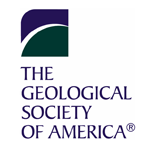 |
The Geological Society of America is a non-profit organization dedicated to the advancement of the geosciences. Established in 1888, The Geological Society of America provides access to elements that are essential to the professional growth of earth scientists at all levels of expertise and from all sectors: academic, government, business, and industry.
The Geological Society's growing membership unites thousands of earth scientists from every corner of the globe in a common purpose to study the mysteries of our planet and share scientific findings.
|
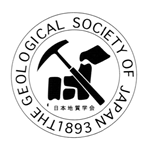 |
The Geological Society of Japan (JGS) was established in 1893 and has contributed to advancement of science through promoting studies and diffusion of information in the field of geosciences.
Activities of the JGS include the organization of meetings and excursions, scientific and educational publications, and the presentation of prizes. JGS is a scientific organization of over 4000 members including researchers, teachers, and engineering technicians of geology.
|
 |
The International Association for Geoscience Diversity
The International Association for Geoscience Diversity (IAGD) is a charitable organization charged with promoting inclusive instructional practices and research opportunities for underrepresented students with disabilities while raising awareness for improving access and engagement in the geoscience disciplines for students and geoscience practitioners with disabilities.
The IAGD community is composed of higher education faculty, staff and students, geoscience industry representatives, disabilities education researchers and other stakeholders interested in promoting access, accommodation and inclusion in the Earth Sciences.
The IAGD provides a network of resources, social and academic support, and mentoring specifically aimed at helping students to successfully navigate certificate and degree programs, leading to accessible employment in the geoscience industry.
|
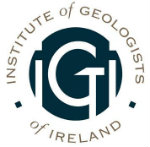
|
IGI was formed in 1999 in order to promote the geosciences in Ireland and to represent the professional interests of its members. Membership is open to all practising geoscientists who meet the required standards of qualification and experience, and the IGI operates with the support of all the major geoscience based technical societies.
The IGI also recognises the importance of promoting the status and use of geology and geoscience in industry and in the community in general. Among the ways this can be achieved are in the responsible development of our natural resources, in development of our infrastructure and in the extension of academic knowledge.
|
 |
The International Association for Promoting Geoethics (IAPG), founded in 2012, is a multidisciplinary scientific platform for widening awareness and discussion of ethical issues in the geosciences, and the ethical, social and cultural implications of Earth science education, research and practice.
The IAPG promotes geoethics as a new way of thinking and practicing geosciences, while respecting Earth processes and resources. Its network allows geoscientists all over the world to collaborate and share opinions, experiences, ideas, and information on geoethical issues, with the aim of increasing awareness about their social role and responsibility in conducting geoscientific activities.
The IAPG develops andpromotes geoethics principles through activities such as the organization of sessions in conferences, and the publication of peer-reviewed articles and books, fostering the dissemination of geoethics within the scientific and professional community and society as a whole. The IAPG pursues its goals through collaborations with international associations and institutions. The IAPG is a not-for-profit association funded by donations.
|
 |
The Society, instituted in 1876, has the general object of advancing the knowledge of the science of mineralogy and its application to other subjects including crystallography, geochemistry, petrology, environmental science and economic geology.
Many activities centre around its eight special interest groups, three of which are joint with the Geological Society. The society publishes scientific journals, books and monographs. Its journals are Mineralogical Magazine, an international journal of mineral sciences, published six times a year, which covers the fields of mineralogy, crystallography, geochemistry, petrology, environmental geology and economic geology and Clay Minerals, which includes papers on Earth processes, soil science, geology/mineralogy, chemistry/material science, colloid/surface science, applied science and technology and health/ environment topics.
In conjunction with other societies worldwide, the Society publishes ‘Elements’, a bimonthly international magazine of mineralogy, geochemistry and petrology.
|
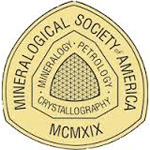 |
The Mineralogical Society of America (MSA) was founded in 1919 for the advancement of mineralogy, crystallography, geochemistry, petrology, and promotion of their uses in other sciences, industry, and the arts. It encourages fundamental research about natural materials; supports the teaching of mineralogical concepts and procedures; and attempts to raise the scientific literacy of society with respect to issues involving mineralogy in the widest sense.
The Society encourages the preservation of mineral collections, displays, mineral localities, type minerals and scientific data. MSA represents the United States internationally with regard to the science of mineralogy.
|
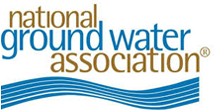 |
The National Ground Water Association is a private non-profit organization representing the professionals involved in the groundwater industry: scientists and engineers, water well drilling contractors and pump installers, and equipment manufacturers and suppliers.
Their membership includes the highest calibre researchers and practitioners in these fields, who regularly lend their expertise to the furtherance of their profession and to the benefit of the groundwater, resource. The Association provides information and education on a wide range of groundwater industry issues through its scientific conferences, professional education programs, publications, certification programs, consumer outreach, and government affairs activities.
|
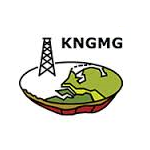 |
The Royal Netherland Geological and Mining Society (KNGMG), founded in 1912, has some 800 active members, mostly of Dutch nationality. It is a scientific association that promotes the interests of Earth Sciences in the Netherlands.
The Society publishes together with the Geological Survey of the Netherlands, the internationally renowned quarterly Netherlands Journal of Geosciences (formerly Geologie en Mijnbouw) and a Newsletter.
|
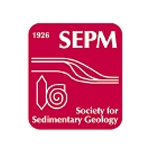 |
SEPM (Society for Sedimentary Geology) is an international not-for-profit Society. Through its network of international members, the Society is dedicated to the dissemination of scientific information on sedimentology, stratigraphy, palaeontology, environmental sciences, marine geology, hydrogeology, and many additional related specialties.
The Society supports the science and its members in their professional objectives by publication of two major scientific journals, the Journal of Sedimentary Research (JSR) and PALAIOS, in addition to producing research conferences, short courses, and Special Publications. Through SEPM's Continuing Education, Publications, Meetings, and other programs, members can both gain and exchange information pertinent to their geologic specialties.
|
| |
|
| |
|